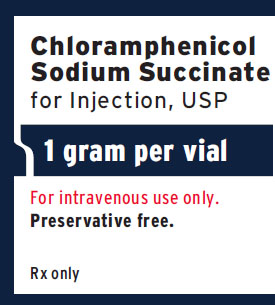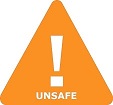Chloramphenicol Sodium Succinate Injection, Powder, Lyophilized, For Solution while Breastfeeding

Is using Chloramphenicol Sodium Succinate Injection, Powder, Lyophilized, For Solution safe or dangerous while breastfeeding?

Nursing Mothers Chloramphenicol is excreted in human milk following oral administration of the drug. Because of the potential for serious adverse reactions in nursing infants from chloramphenicol, a decision should be made whether to discontinue nursing or to discontinue the drug, taking into account the importance of the drug to the mother (see ADVERSE REACTIONS, “Gray Syndrome” ).
Chloramphenicol Sodium Succinate Injection, Powder, Lyophilized, For Solution Breastfeeding Analsys
Chloramphenicol while Breastfeeding
UnsafeCAS Number: 56-75-7
Stupor, flatulence or vomiting have been described. Theoretical risk though never reported of bone marrow toxicity. Use only if necessary. Avoid any use during neonatal period. Be aware of the possibility of false negative results of bacterial cultures when the mother is on antibiotics.
Chloramphenicol Sodium Succinate Injection, Powder, Lyophilized, For Solution Breastfeeding Analsys - 2
Chloramphenicol while Breastfeeding
CAS Number: 56-75-7
Adverse reactions such as vomiting, excessive intestinal gas and falling asleep at the breast have been reported in breastfed infants whose mothers were taking oral chloramphenicol. Milk concentrations are not sufficient to induce "gray baby" syndrome, but since chloramphenicol-induced aplastic anemia is not dose-related, this might occur, but has not been reported. An alternate drug is preferred to chloramphenicol during breastfeeding, especially while nursing a newborn or preterm infant. If the mother must receive chloramphenicol during nursing, monitor the infant for gastrointestinal disturbances and adequacy of nursing. Monitoring of the infant's complete blood count and differential is advisable. In some cases, discontinuation of breastfeeding might be preferred.

What should I do if I am breastfeeding mother and I am already exposed to Chloramphenicol Sodium Succinate Injection, Powder, Lyophilized, For Solution?
We have already established that Chloramphenicol Sodium Succinate Injection, Powder, Lyophilized, For Solution is unsafe in breastfeeding and breastfeeding while using Chloramphenicol Sodium Succinate Injection, Powder, Lyophilized, For Solution is not a good idea however if have already used
My doctor has prescribed me Chloramphenicol Sodium Succinate Injection, Powder, Lyophilized, For Solution, what should I do?
If your doctor knows that you are breastfeeding mother and still prescribes Chloramphenicol Sodium Succinate Injection, Powder, Lyophilized, For Solution then there must be good reason for that as Chloramphenicol Sodium Succinate Injection, Powder, Lyophilized, For Solution is considered unsafe, It usually happens when doctor finds that overall advantage of taking
If I am using Chloramphenicol Sodium Succinate Injection, Powder, Lyophilized, For Solution, will my baby need extra monitoring?
Yes, Extra monitoring is required if mother is using Chloramphenicol Sodium Succinate Injection, Powder, Lyophilized, For Solution and breastfeeding as it is considered unsafe for baby.
Who can I talk to if I have questions about usage of Chloramphenicol Sodium Succinate Injection, Powder, Lyophilized, For Solution in breastfeeding?
US
National Womens Health and Breastfeeding Helpline: 800-994-9662 (TDD 888-220-5446) 9 a.m. and 6 p.m. ET, Monday through Friday
UK
National Breastfeeding Helpline: 0300-100-0212 9.30am to 9.30pm, daily
Association of Breastfeeding Mothers: 0300-330-5453
La Leche League: 0345-120-2918
The Breastfeeding Network supporter line in Bengali and Sylheti: 0300-456-2421
National Childbirth Trust (NCT): 0300-330-0700
Australia
National Breastfeeding Helpline: 1800-686-268 24 hours a day, 7 days a week
Canada
Telehealth Ontario for breastfeeding: 1-866-797-0000 24 hours a day, 7 days a week
